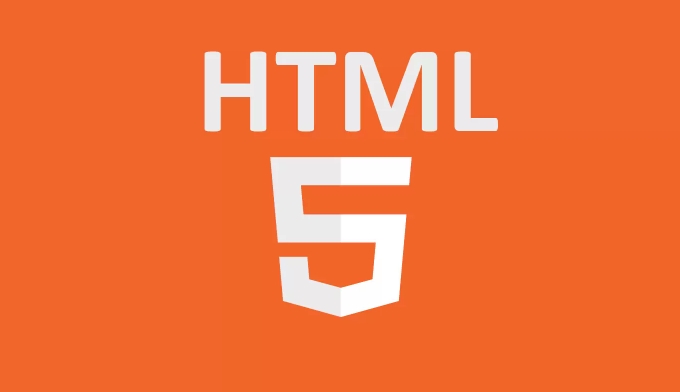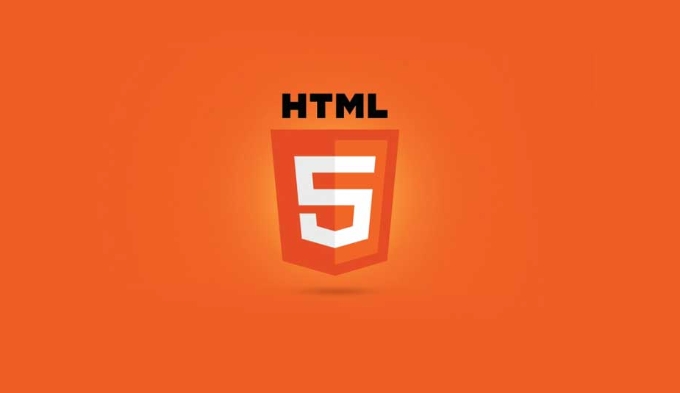Structured illustrations and their titles in HTML5 using <figure> and <figcaption> are very effective. <figure> is used to encapsulate independent content such as pictures, charts, etc., while <figcaption> provides it with a title, which combines the two to improve semantics and accessibility; it is commonly found in illustrations or data visualization scenarios in blogs, technical articles and reports; the default style can be customized through CSS to optimize layout and aesthetics, while enhancing the experience and SEO effects of screen reader users.

Using <figure></figure> and <figcaption></figcaption> in HTML5 is a great way to structure illustrations, diagrams, or images along with their captions. These tags help make your content more semantic and accessible, which is especially useful for screen readers and SEO.
 ` and `<figcaption> ` in HTML5 for illustrations." />
` and `<figcaption> ` in HTML5 for illustrations." /> What Are <figure></figure> and <figcaption></figcaption> ?
The <figure></figure> tag is used to encapsulate self-contained content like images, charts, or diagrams. It's typically used in conjunction with the <figcaption></figcaption> element, which provides a caption or title for the content inside <figure></figure> . Together, they help browsers and assistive technologies understand the relationship between an image and its description.
For example:
 ` and `<figcaption> ` in HTML5 for illustrations." />
` and `<figcaption> ` in HTML5 for illustrations." /><figure> <img src="/static/imghw/default1.png" data-src="chart.png" class="lazy" alt="Sales growth chart"> <figcaption>Sales Growth from Q1 to Q4</figcaption> </figure>
This structure makes it clear that "Sales Growth from Q1 to Q4" is the caption for the chart image.
When Should You Use Them?
You should use <figure> and <figcaption> when:
 ` and `<figcaption> ` in HTML5 for illustrations." />
` and `<figcaption> ` in HTML5 for illustrations." />- An image or diagram has a visible caption.
- The content can stand alone from the main flow of the document.
- You want to improve accessibility and semantic meaning.
They're commonly used in blogs, documentation pages, and educational websites where visuals are accompanied by explanations.
Some common scenarios include:
- Blog posts with illustrative images
- Technical articles with code diagrams
- Reports with data visualizations
Avoid using <figure> for purely decorative images or layout purposes — that's what CSS is for.
How to Style <figure> and <figcaption>
By default, browsers apply some basic styling to <figure> , like removing margins and making it a block-level element. But you can customize this easily with CSS.
Here's a simple example:
figure {
margin: 1em 0;
text-align: center;
}
figcaption {
font-style: italic;
color: #666;
margin-top: 0.5em;
}With this CSS, all figures will be centered and have a small vertical space around them, while captions will appear in italics and a lighter color.
A few tips when styling:
- Always include
alttext in<img alt="Using `` and `` in HTML5 for illustrations." >tags inside<figure></figure> - Consider responsiveness — wrap images in
<figure></figure>for easier mobile layout - Don't forget about spacing — captions shouldn't stick too close to the image
Also, remember that <figure></figure> can contain other elements like <video></video> , <audio></audio> , or even multiple <img alt="Using `` and `` in HTML5 for illustrations." > tags if needed.
Accessibility Benefits
Using <figure></figure> and <figcaption></figcaption> improves the experience for users who rely on screen readers. These tools can identify the relationship between the figure and its caption, allowing users to better understand the context.
In addition:
- Screen readers may announce the presence of a caption
- Search engines can better index visual content with proper structure
- Your markup becomes cleaner and easier to maintain
It might not seem like much, but these small improvements add up over time.
That's basically how <figure></figure> and <figcaption></figcaption> work together. They're not complicated, but they do make a difference in clarity and accessibility.
The above is the detailed content of Using `` and `` in HTML5 for illustrations.. For more information, please follow other related articles on the PHP Chinese website!

Hot AI Tools

Undress AI Tool
Undress images for free

Undresser.AI Undress
AI-powered app for creating realistic nude photos

AI Clothes Remover
Online AI tool for removing clothes from photos.

Clothoff.io
AI clothes remover

Video Face Swap
Swap faces in any video effortlessly with our completely free AI face swap tool!

Hot Article

Hot Tools

Notepad++7.3.1
Easy-to-use and free code editor

SublimeText3 Chinese version
Chinese version, very easy to use

Zend Studio 13.0.1
Powerful PHP integrated development environment

Dreamweaver CS6
Visual web development tools

SublimeText3 Mac version
God-level code editing software (SublimeText3)

Hot Topics
 What is Microdata? HTML5 Explained
Jun 10, 2025 am 12:09 AM
What is Microdata? HTML5 Explained
Jun 10, 2025 am 12:09 AM
MicrodataenhancesSEOandcontentdisplayinsearchresultsbyembeddingstructureddataintoHTML.1)Useitemscope,itemtype,anditempropattributestoaddsemanticmeaning.2)ApplyMicrodatatokeycontentlikebooksorproductsforrichsnippets.3)BalanceusagetoavoidclutteringHTML
 Microdata in HTML5: The Key to Better Search Engine Ranking
Jun 12, 2025 am 10:22 AM
Microdata in HTML5: The Key to Better Search Engine Ranking
Jun 12, 2025 am 10:22 AM
MicrodatasignificantlyimprovesSEObyenhancingsearchengineunderstandingandrankingofwebpages.1)ItaddssemanticmeaningtoHTML,aidingbetterindexing.2)Itenablesrichsnippets,increasingclick-throughrates.3)UsecorrectSchema.orgvocabularyandkeepitupdated.4)Valid
 Audio and Video: HTML5 VS Youtube Embedding
Jun 19, 2025 am 12:51 AM
Audio and Video: HTML5 VS Youtube Embedding
Jun 19, 2025 am 12:51 AM
HTML5isbetterforcontrolandcustomization,whileYouTubeisbetterforeaseandperformance.1)HTML5allowsfortailoreduserexperiencesbutrequiresmanagingcodecsandcompatibility.2)YouTubeofferssimpleembeddingwithoptimizedperformancebutlimitscontroloverappearanceand
 Audio and Video : What about browser compatibility?
Jun 11, 2025 am 12:01 AM
Audio and Video : What about browser compatibility?
Jun 11, 2025 am 12:01 AM
Browser compatibility can ensure that audio and video content works properly in different browsers by using multiple formats and fallback strategies. 1. Use HTML5 audio and video tags and provide multiple format sources such as MP4 and OGG. 2. Consider automatic playback and mute strategies and follow the browser's policies. 3. Handle cross-domain resource sharing (CORS) issues. 4. Optimize performance and use adaptive bit rate streaming media technologies such as HLS.
 Audio and Video: can i record it?
Jun 14, 2025 am 12:15 AM
Audio and Video: can i record it?
Jun 14, 2025 am 12:15 AM
Yes,youcanrecordaudioandvideo.Here'show:1)Foraudio,useasoundcheckscripttofindthequietestspotandtestlevels.2)Forvideo,useOpenCVtomonitorbrightnessandadjustlighting.3)Torecordbothsimultaneously,usethreadinginPythonforsynchronization,oroptforuser-friend
 Adding Audio and Video to HTML: Best Practices and Examples
Jun 13, 2025 am 12:01 AM
Adding Audio and Video to HTML: Best Practices and Examples
Jun 13, 2025 am 12:01 AM
Use and elements to add audio and video to HTML. 1) Use elements to embed audio, make sure to include controls attributes and alternate text. 2) Use elements to embed video, set width and height attributes, and provide multiple video sources to ensure compatibility. 3) Add subtitles to improve accessibility. 4) Optimize performance through adaptive bit rate streaming and delayed loading. 5) Avoid automatic playback unless muted, ensuring user control and a clear interface.
 What is the purpose of the input type='range'?
Jun 23, 2025 am 12:17 AM
What is the purpose of the input type='range'?
Jun 23, 2025 am 12:17 AM
inputtype="range" is used to create a slider control, allowing the user to select a value from a predefined range. 1. It is mainly suitable for scenes where values ??need to be selected intuitively, such as adjusting volume, brightness or scoring systems; 2. The basic structure includes min, max and step attributes, which set the minimum value, maximum value and step size respectively; 3. This value can be obtained and used in real time through JavaScript to improve the interactive experience; 4. It is recommended to display the current value and pay attention to accessibility and browser compatibility issues when using it.
 HTML audio and video: Examples
Jun 19, 2025 am 12:54 AM
HTML audio and video: Examples
Jun 19, 2025 am 12:54 AM
Audio and video elements in HTML can improve the dynamics and user experience of web pages. 1. Embed audio files using elements and realize automatic and loop playback of background music through autoplay and loop properties. 2. Use elements to embed video files, set width and height and controls properties, and provide multiple formats to ensure browser compatibility.






